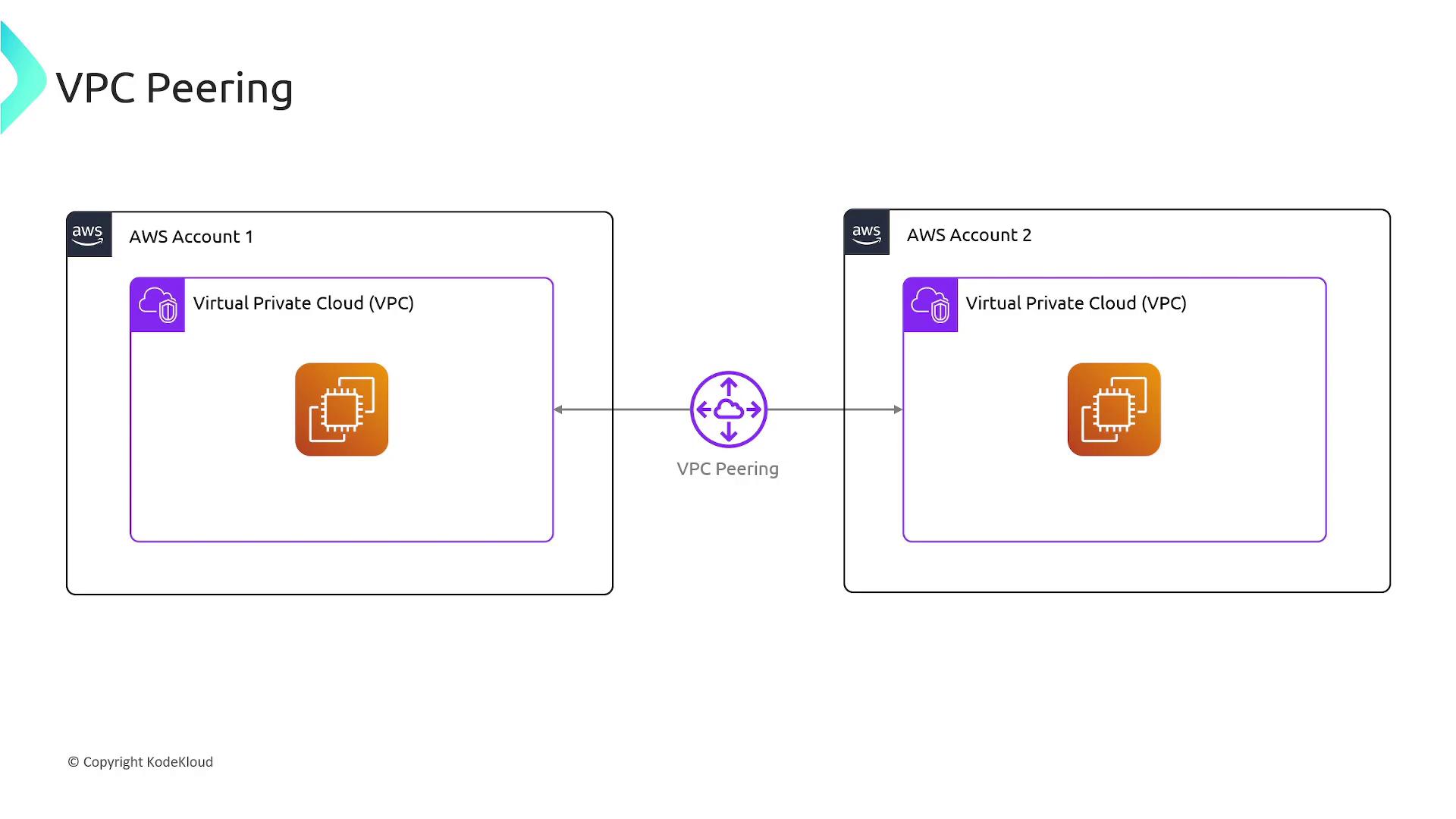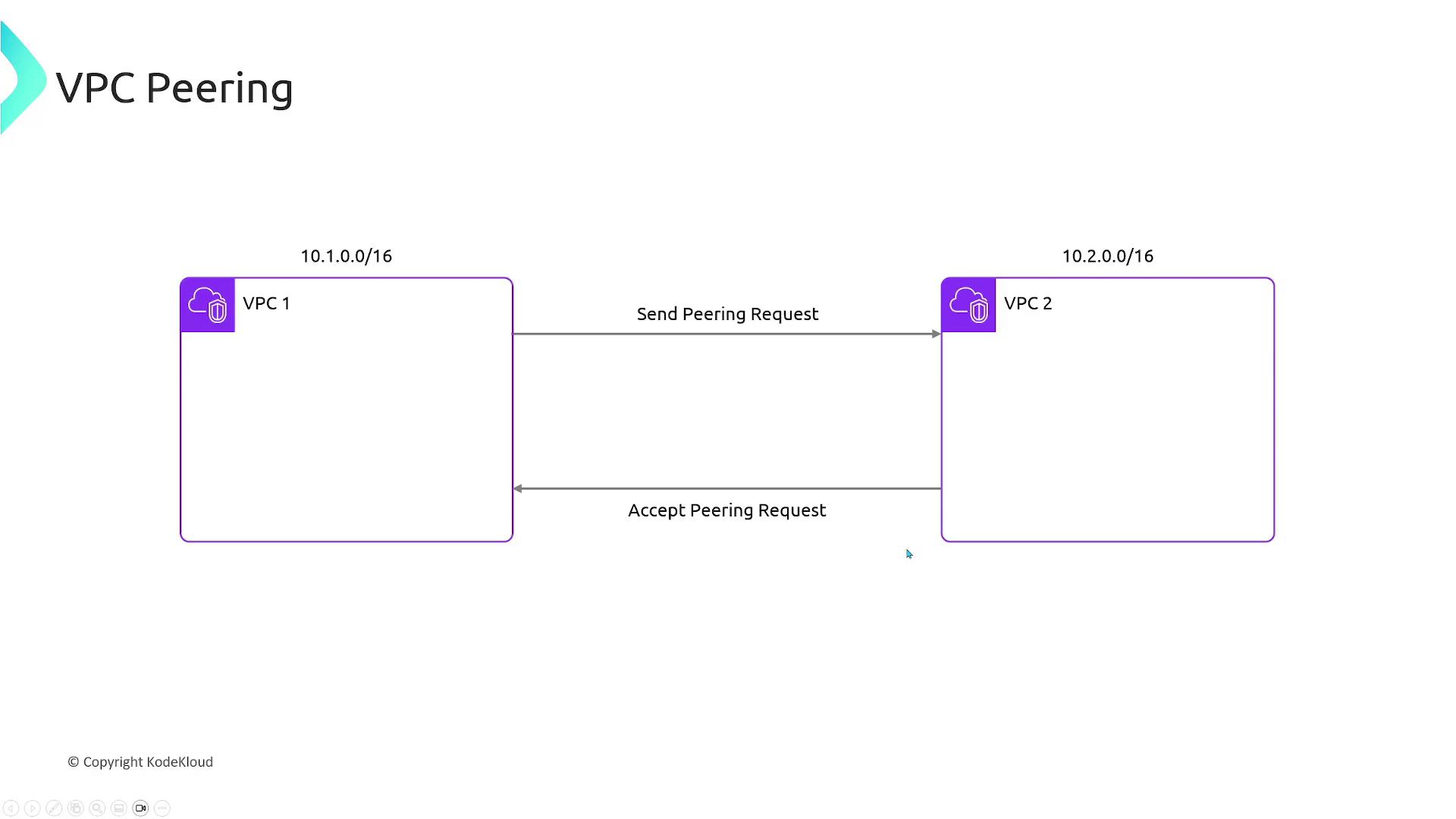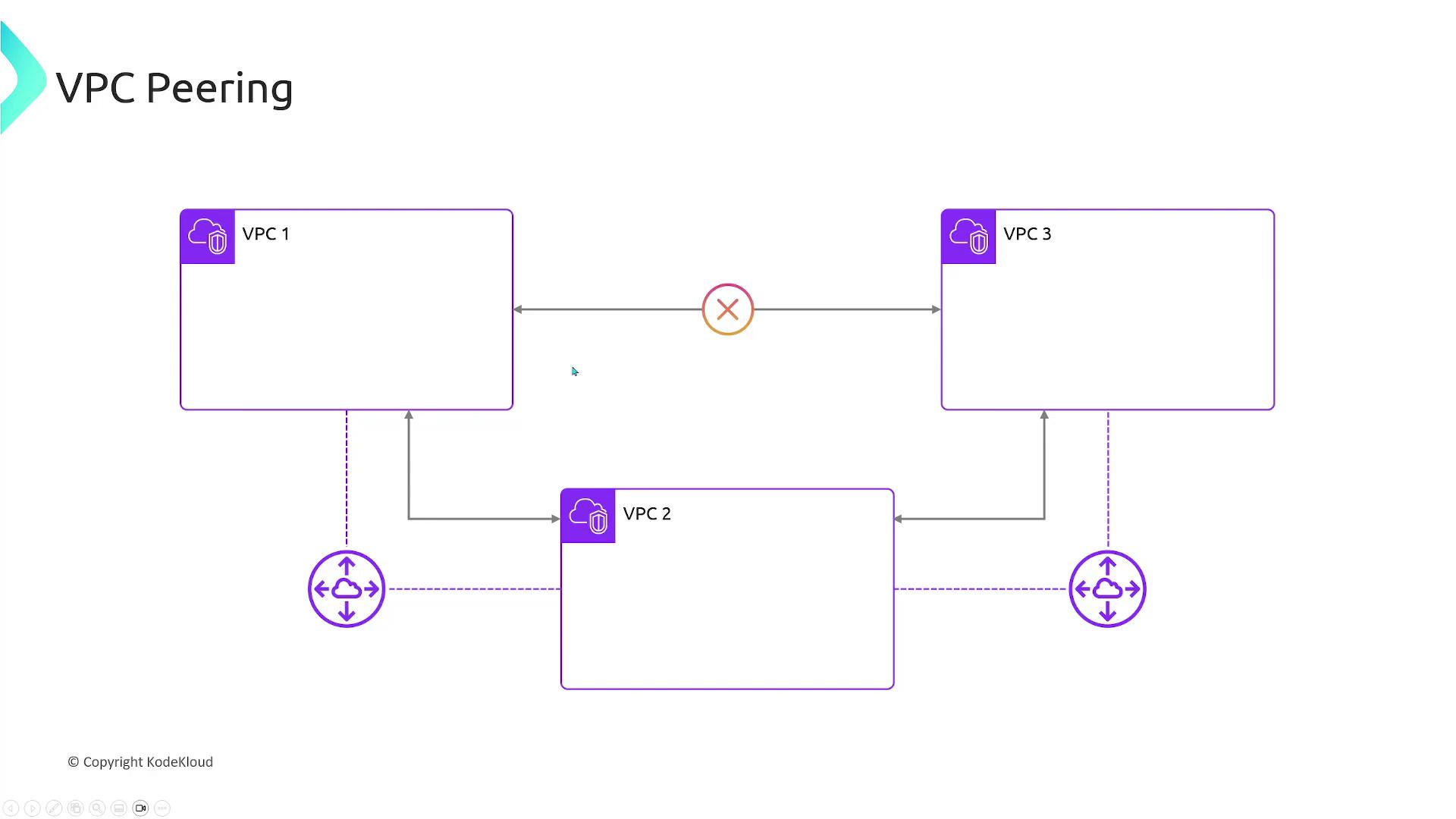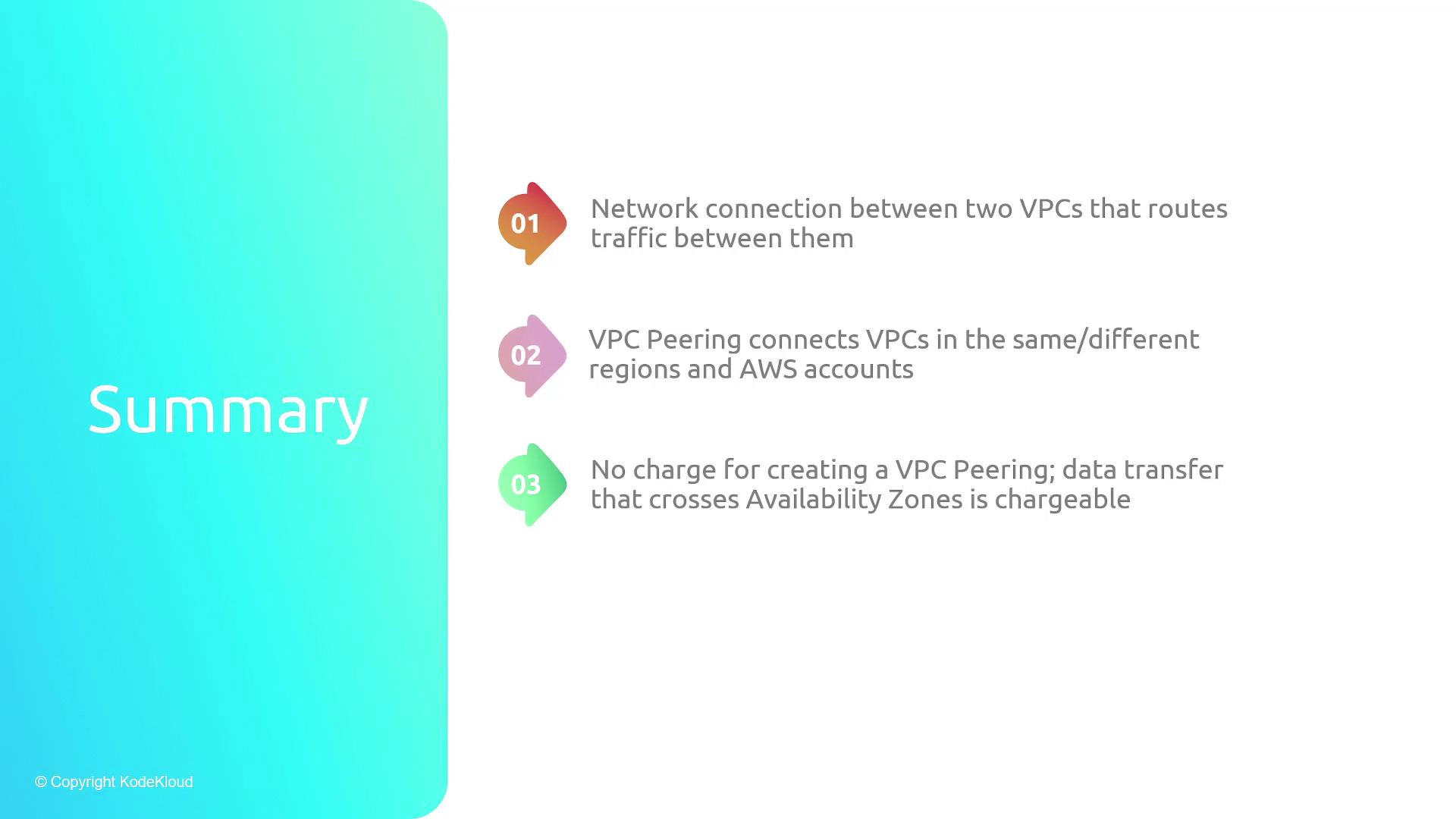AWS Solutions Architect Associate Certification
Services Networking
VPC Peering
VPC peering is an essential component in cloud networking, enabling direct communication between Virtual Private Clouds (VPCs) by connecting them through a private network. In this lesson, we will explore how VPC peering works, its benefits, and considerations for configuration. For additional context, refer to the AWS Cloud Practitioner (CLF-C02) exam materials.
Overview of VPC Isolation and Peering
By default, resources hosted in different VPCs are isolated because each VPC creates its own network boundary. This isolation prevents instances in separate VPCs from communicating with each other unless explicitly configured. VPC peering addresses this challenge by creating a direct network connection between two VPCs, allowing instances in each VPC to interact as if they were on the same network.
VPC peering supports connections under various scenarios:
- Between VPCs in the same region.
- Across different regions.
- Between VPCs in different AWS accounts.

How VPC Peering Works
Consider an example with two VPCs:
- VPC One: CIDR block 10.1.0.0/16
- VPC Two: CIDR block 10.2.0.0/16
One VPC initiates a peering request to the other. If the VPCs belong to different AWS accounts, the owner of the target VPC must accept the request. In the same account, the request is automatically approved. Once accepted, the peering connection is established.
After establishing the connection, you need to manually update the route tables in both VPCs. For instance, in VPC One, add a route that directs traffic destined for the 10.2.0.0/16 CIDR block to the peering connection. Similarly, in VPC Two, create a route for the 10.1.0.0/16 CIDR block pointing to the same connection.

Routing Note
Remember to update the route tables in both VPCs after establishing the peering connection. Without these changes, instances will not be able to communicate.
Key Considerations for VPC Peering
One critical aspect of VPC peering is its non-transitive nature. For example, if you have three VPCs (VPC One, VPC Two, and VPC Three) and establish peering between VPC One & VPC Two and between VPC Two & VPC Three, VPC One will not automatically communicate with VPC Three. Each communication pair requires a dedicated peering connection.

Non-Transitivity Warning
VPC peering does not support transitive routing. Ensure that each pair of VPCs needing communication has its own peering connection.
Pricing Considerations
VPC peering connections themselves incur no additional charges. However, data transfer costs apply in specific scenarios:
- Data transferred within the same availability zone via a VPC peering connection is free.
- Data transferred between different availability zones is billed.
Summary
VPC peering offers a secure and efficient mechanism to connect two VPCs, allowing direct routing of traffic as if they are part of the same network. The key benefits include:
| Feature | Description |
|---|---|
| Direct Connectivity | Enables private communication between VPC resources |
| Cross-Region Support | Works across regions and between AWS accounts |
| Cost Efficiency | No additional charge for peering connections; only data transfer is billed (if applicable) |

By understanding and implementing VPC peering, you can effectively design and manage your cloud network, ensuring secure and efficient resource communication across different VPCs. For more configuration details and best practices, refer to the AWS documentation and guidelines on VPC peering.
Watch Video
Watch video content